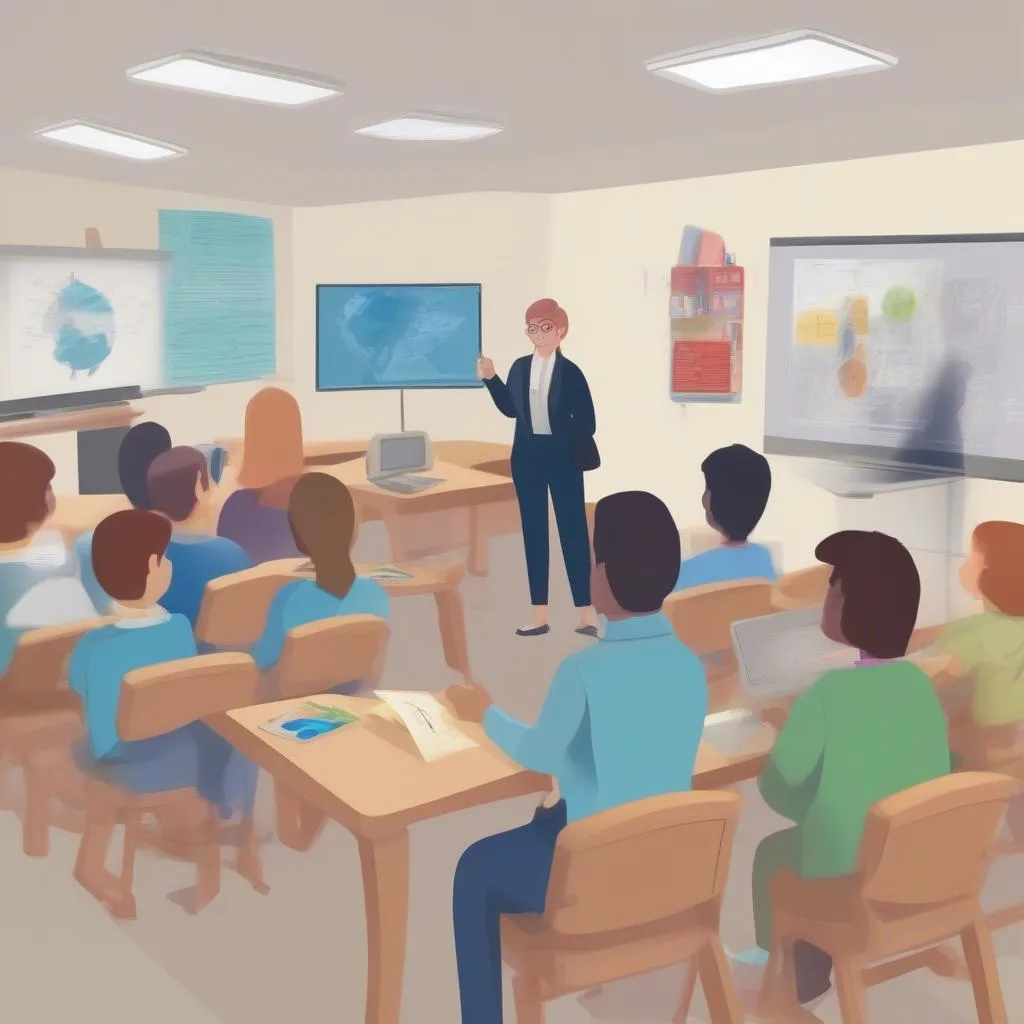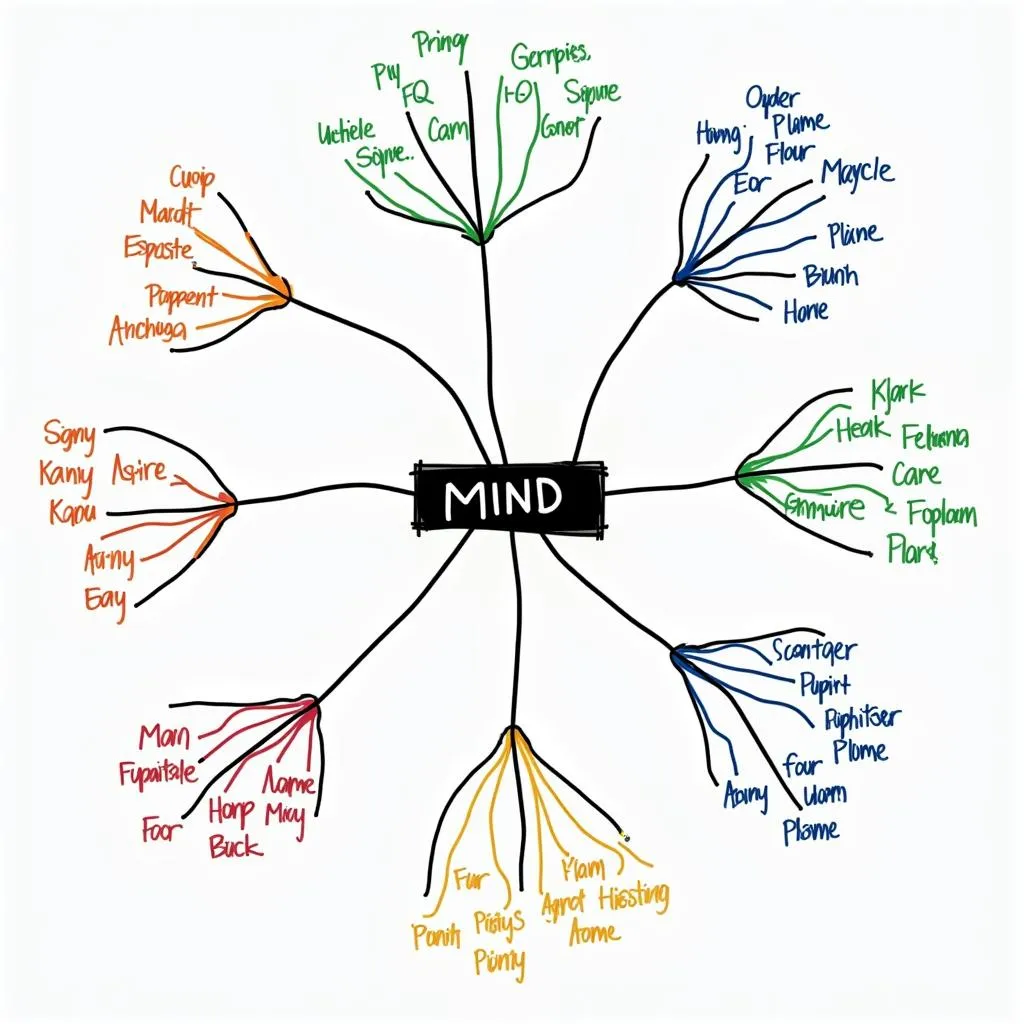“Learning from friends is better than learning from a teacher,” a proverb passed down through generations, offers valuable advice on effective learning. But what are the characteristics of traditional learning styles, and what makes them special? Let’s explore and discover with “HOC LAM”!
Traditional Learning Style: Timeless Values
Since ancient times, our ancestors emphasized direct knowledge transfer through interaction between teachers and learners. Students were often taught within families, villages, and respected scholars played crucial roles.
1. Direct Learning: Interaction and Q&A
“Even a word of teaching makes someone a teacher, even half a word of teaching makes someone a teacher,” this saying highlights the importance of teachers in Vietnamese traditional learning. The traditional style encourages students to learn directly from teachers through lectures, discussions, and practice. Students are encouraged to ask questions, debate, and exchange ideas with teachers, creating a lively and effective learning environment.
Example:
Imagine a traditional classroom where children sit in neat rows listening to the teacher. During explanations, small hands raise, asking about things they don’t understand. The teacher gently answers, sometimes sharing stories and relatable examples to make learning more engaging.
2. Foundational Learning: Building a Knowledge Base
“Trees have roots, water has sources,” the traditional style emphasizes learning on a solid foundation. Before acquiring new knowledge, students need to master the basics, which then allows them to effectively grasp advanced concepts.
Example:
An is a student of the village teacher, specializing in Confucian script. To learn Chinese characters, An was taught from basic strokes, simple words, and gradually progressed to poems and more complex sentences. In this way, An gradually absorbed and mastered knowledge, building a solid foundation for himself.
3. Focus on Skills: Cultivating Practical Abilities
Traditional learning focuses on developing practical skills, not just learning theory but also applying it in practice. Students participate in activities like production labor, artistic practice, or household chores, helping them learn and develop essential life skills.
Example:
Binh is a student of a pottery village artisan. Binh not only learns the theory of clay and shaping techniques but also practices directly, from kneading clay and shaping to firing pottery. Through practice, Binh not only masters knowledge but also develops skillful and creative abilities.
Applying Traditional Styles in Modern Learning
Traditional learning styles still hold value today, with strengths such as:
- Effective Learning: Direct interaction motivates students and helps them absorb knowledge deeply.
- Skill Development: Helps students develop practical skills and apply knowledge to life.
- Character Development: Helps students cultivate moral qualities, self-discipline, self-learning, and independence.
Example:
Minh is a university student. Minh always focuses on learning directly from lecturers, participating in discussions, asking questions, and exchanging ideas. Minh also actively participates in practical activities to develop skills and apply knowledge.
 Traditional learning style and modern learning style
Traditional learning style and modern learning style
Advice from Experts
“Continuous learning is the key to success,” shared Mr. Nguyen Van A, Professor at Hanoi University of Science and Technology. He also emphasized the importance of combining the best elements of traditional and modern learning styles.
“Learning is a journey that never ends,” advised Ms. Le Thi B, Education Expert, encouraging us to be proactive in learning, constantly acquire new knowledge, and continuously improve ourselves.
Conclusion
Traditional learning styles hold many values, helping students absorb knowledge effectively, develop practical skills, and cultivate character. Combine the positive elements of traditional styles with modern learning methods to achieve the best learning outcomes.
Leave a comment below to share your thoughts on this topic! You can also explore other helpful articles on the “HOC LAM” website about How to make a presentation for coursework, Minimalist learning, How to learn computers quickly, How to study seriously in the summer, How to get a full scholarship abroad!
